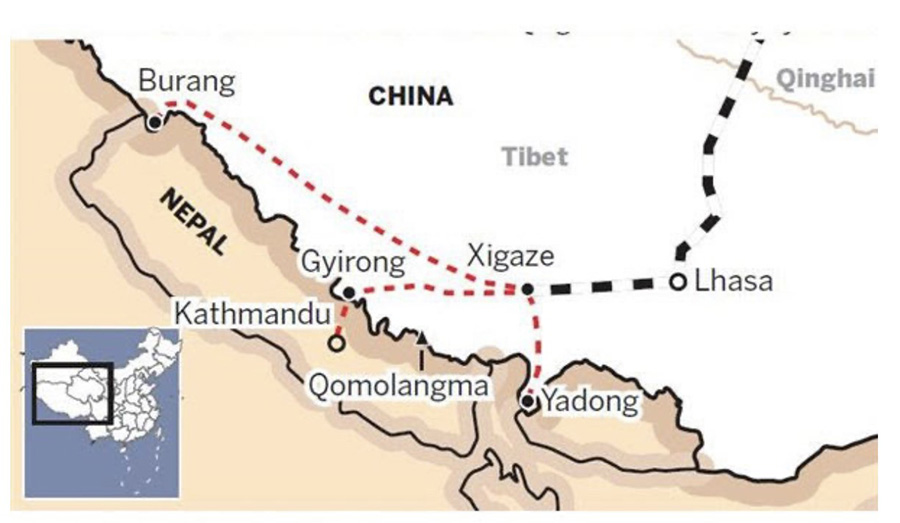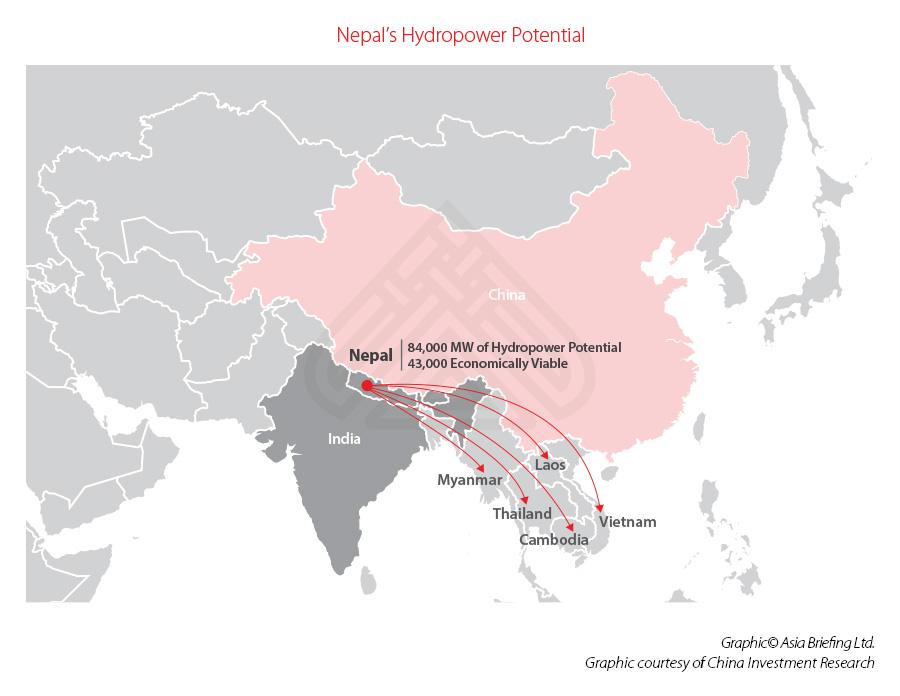Xi’an-Kathmandu Combined Road-Rail Cargo Service Launched
China-Nepal route over Himalayas now open for business
Op/Ed by Chris Devonshire-Ellis
A combined road-rail route from China and Tibet and through to the Nepalese capital of Kathmandu was launched last Friday. Starting in Xi’an, the capital of China’s Shaanxi Province, the service takes eight days to reach Kathmandu. There are plans to make the entire route feasible via rail. Currently, the route services Xi’an to Xigaze in Tibet, and is then reloaded onto lorries for transport to Kathmandu.
China Railway Xi’an Group and China Railway Container Transport have jointly launched the new service, with the inaugural cargo including PVC pipes, grouting pipes, clothes, shoes and printers leaving Xi’an on Friday. Once in Xigaze the cargo will be transferred onto trucks and delivered to Kathmandu. The cargo service is expected to decrease Nepal’s dependency on India for its freight transportation.
The New China-Tibet-Nepal Rail-Road Transport Route

The Developing Nepali Belt & Road
In October last year, Chinese President Xi met with Nepali President Bidya Devi Bhandari; the first visit by a Chinese President to Nepal in 23 years. One of China’s goals is to help Nepal realise its dream of becoming a land-linked country from a land-locked one, thus infrastructure is critical.
During the China-Nepal meetings, the two countries signed 20 cooperation agreements, one of which was a pledge of US$500 million in financial aid over the next two years. They also agreed to a 70 km extension of the existing Qinghai-Tibet railway to Rasuwagadhi, then onto Kathmandu and Lumbini (birthplace of The Buddha).
This represented a small component, with much lower financing amounts that had been pre-empted a year earlier by a China pledge to fund US$8.3 billion for a series of infrastructure projects, most of which was around the construction of trans-Himalayan connectivity to include ports, 540 km of highways, operational by 2025 and to include rail, air and communications. Ultimately, these will link into Uttar Pradesh and could conceivably become a Nepal-India-China corridor.
Nepals’ Hydropower Potential
Nepal also has 84,000 MW of Hydropower Potential – of which 43,000 MW could be economically viable. This energy can be sold onto countries with power shortages, such as Myanmar, Laos and the rest of South-East Asia.

Having China increasing Nepal’s ability to trade provides the country with increased revenue sources to allow building of hydropower resources which again can be used to boost national revenues. Nepal is still ranked as one of the poorest countries in the world with a GDP per capita of US$1,048 per annum, and the Chinese initiatives at expanding trade routes will assist the country meet its goals.
Related Reading
- India Becomes Transportation Highway Center of China’s Belt and Road Initiative
- China, Nepal Discuss USD8 Billion Cross Border Rail Link Through Himalayas
About Us
Silk Road Briefing is written by Dezan Shira & Associates. The firm has 28 offices throughout Asia, and assists foreign investors into the region. For strategic advisory and business intelligence issues please contact the firm at silkroad@dezshira.com or visit www.dezshira.com





